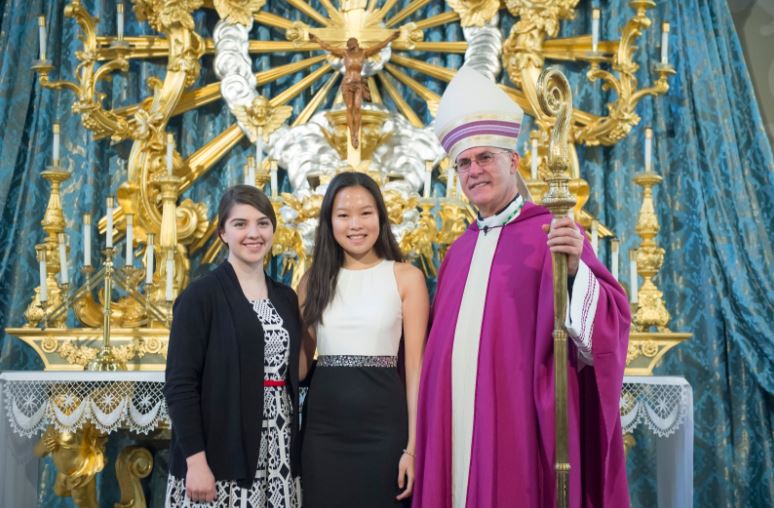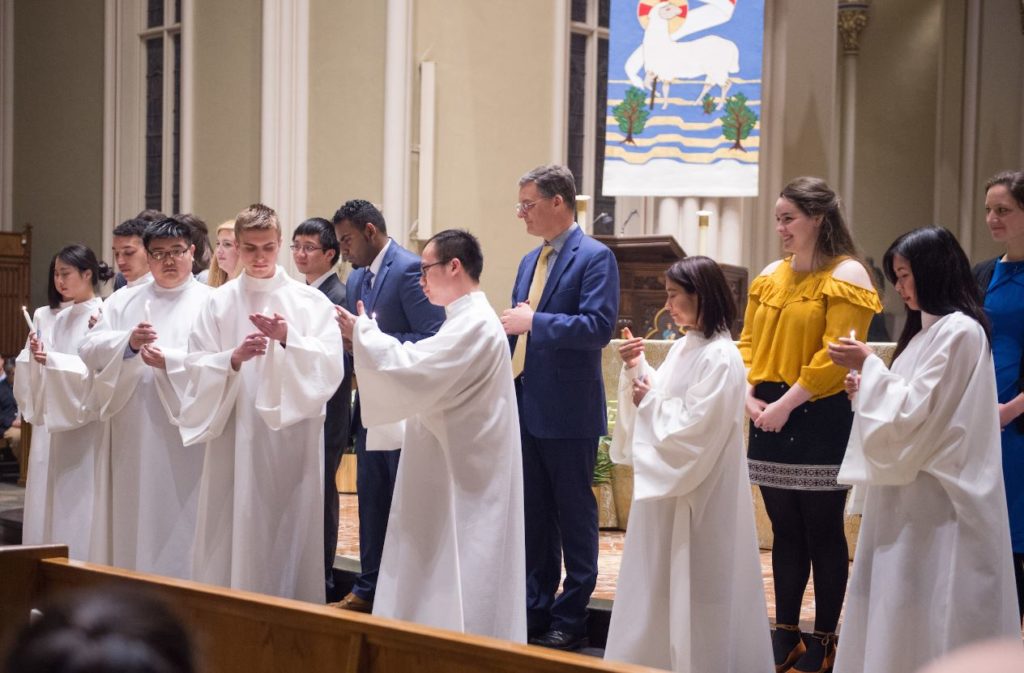Flora Tang, Senior Anchor Intern
This past Easter Vigil, I stood beside the baptismal font as 11 beloved members of the Notre Dame community were received into the family of Christ through Baptism, Confirmation, and first Eucharist here at the Basilica of the Sacred Heart. Whereas this time, I stood by them at Easter Vigil Mass as the intern for Sacramental Preparation, two and a half years ago, I, too, stood in front of this same Basilica and professed before the congregation that I did believe that “all the holy Catholic Church believes, teaches, and proclaims to be revealed by God.” Somehow, back in the chaotic busyness of sophomore year, I became Catholic.
Whenever I mention to friends and professors that I had only recently become Catholic, the question of “why did you become Catholic?” inevitably comes up: a question to which I have since then recited a 1-minute elevator pitch-length answer, a 5-minute long answer, and an hour-long answer. As I renewed my baptismal promises this Easter Vigil along with my RCIA neophytes, I asked myself again why I became Catholic, and why, two and a half years later, I still believe.

Why do I still believe, when I, just this spring break on a pilgrimage, had stepped foot on what was once massacre sites where children were killed during the El Salvador Civil War? Why do I still believe, when I walked through the now-permanent refugee camps outside Bethlehem, where hope or even God seemed absent? Or when the question of theodicy– of why a God who is mercy and resurrection allows for suffering in the world– remains no longer a philosophical question but the heart of stories I hear from people I encounter around the world? Or, on the other hand, why do I still believe, when theological and philosophical arguments tug at the core of what I hold as religious truth? When my political science and peace studies classes reveal more and more the structural violence in the world caused or justified by religious doctrines, including those of my own? When faith, by definition, means that what I hold to be true may not always be substantiated by empirical evidence?
Yet above the altar of almost every Catholic church lies my path to faith every time despair seems to have the last word: a crucified Christ, who unites himself with the bleeding and suffering of God’s beloved world. This crucifix reminds me that beyond all the suffering I see in the world, there is a God whose love is so profound that He comes to walk in solidarity with our suffering. Here on this crucifix, hope lives because the agony of Christ does not have the last word: love and resurrection does.
But just as the Eucharist re-presents the self-giving love of Christ each day, the Resurrection is likewise not just a 1st century event involving earthquakes and blinding lights, but an event I– even during my greatest times of despair– see with my own eyes here and now.

Perhaps I still believe because my eyes have seen the resurrection.
I see the resurrection at the Catholic Worker house downtown, where students and the homeless come together to share meals in dignity and peace. I see the resurrection in the faith of the Salvadoran mother, who remains in hope and fights for the lives of Salvadoran migrants since the loss of her own migrant son ten years ago. I see the resurrection in the student clubs on campus that boldly serve as voices for the voiceless ones at this university; in each friend who lifted me up during my own times of despair and doubt; and in each of the 11 neophytes, who by their baptism, chose a life of hope and discipleship.
I became Catholic, and today still believe in the Catholic faith, because it is ultimately a faith that clings onto the crucifix as well as the hope of the resurrection– the hope that through the life-giving power of love and mercy, redemption can triumph over a world that appears to be plagued by injustice and death. If the resurrection of Christ witnessed by the Jerusalem women on that very first Easter Sunday prompted them to a life of discipleship and faith, so did the everyday resurrection– the everyday acts of unceasing love and hope that continues despite the darkness around them– which I witness with my own eyes strengthened me to become Catholic two-and-a-half years ago, and today, to say: yes, I still believe.